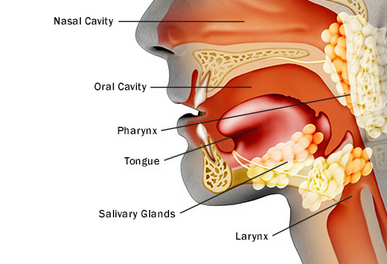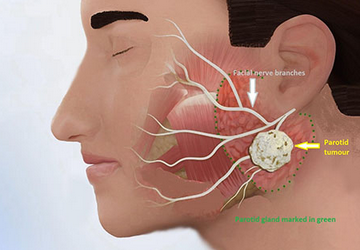Wit mondvlekke? Hees? Gratis siftingstoetse vir kop- en nekkanker
 Wit vlekke aan die binnekant van jou mond en heesheid vir langer as twee weke is maar twee van die gevaartekens van moontlike kanker van die kop en nek. Dié soort kanker is besig om toe te neem, en is nou sesde op die lys van algemene kankers. Die toename is hoofsaaklik die gevolg van tabakrook, alkohol en die papiloom-virus. En e-sigarette is glad nie veilig nie!
Wit vlekke aan die binnekant van jou mond en heesheid vir langer as twee weke is maar twee van die gevaartekens van moontlike kanker van die kop en nek. Dié soort kanker is besig om toe te neem, en is nou sesde op die lys van algemene kankers. Die toename is hoofsaaklik die gevolg van tabakrook, alkohol en die papiloom-virus. En e-sigarette is glad nie veilig nie!
In Gesondheid op RSG gesels Marí Hudson met dr. Johann Kluge, ‘n oor-, neus- en keelchirurg by Life Groenkloof Hospitaal en die Departement Chirurgie aan die Universiteit van Pretoria, oor dié soorte kanker, die gevaartekens, wie die grootste gevaar loop om dié kanker op te doen, en oor gratis siftingstoetse wat op 11 April in Pretoria aangebied word.
Gratis kanker-siftingstoetse word op 11 April by die LIFE GROENKLOOF HOSPITAAL MEDIESE SENTRUM SUITE 110 GROENKLOOF van 8:00 tot 18:00 gedoen.
Vir meer inligting, bel (012) 346-0879 of 082-576-5392.
Luister ook na die vorige onderhoud:
Kanker en ander ernstige siektes van, of beserings aan die kop en nek, is besig om toe neem. Waarom? Word dié probleme vroeg genoeg opgespoor? En hoe maak spesialiste wanneer omvattende chirurgie nodig is? Marí Hudson gesels met ‘n oor-, neus- en keelspesialis oor die behandeling van dié ernstige probleme.
Hier is meer agtergrond-inligting
 In 2018, it is estimated that there will be more than 120,000 new cases of oral, head and neck cancer diagnosed, and unfortunately, many individuals will not be aware of their cancer until it has reached an advanced stage. Oral, head and neck cancers now ranked in the top six cancers worldwide.
In 2018, it is estimated that there will be more than 120,000 new cases of oral, head and neck cancer diagnosed, and unfortunately, many individuals will not be aware of their cancer until it has reached an advanced stage. Oral, head and neck cancers now ranked in the top six cancers worldwide.
Oral, Head and Neck Cancer Facts
Oral, head and neck cancers refer to many types of cancers, including those that arise in the nasal cavity, sinuses, lips, mouth, thyroid glands, salivary glands, throat or larynx (voice box). In 2018, there will be more than 650,000 new cases of cancer of the oral cavity, pharynx, throat and thyroid worldwide, and approximately 14,240 deaths from these cancers in the United States alone. Cancers of the oropharynx (tonsil and base of tongue) are increasing in incidence, particularly in younger nonsmokers, and it is estimated that these cancers alone will account for over 40,000 cases per year in the United States based on statistical review.
Signs and Symptoms
Most oral cancers arise on the lips, tongue or the floor of the mouth. They also may occur inside your cheeks, on your gums or on the roof of your mouth. Oropharyngeal cancers related to HPV are often found in the tonsil or base of tongue. Other head and neck cancers arise from the voice box or throat, or from salivary (spit) glands or the thyroid gland. Some early signs and symptoms include:
- A red or white spot in your mouth that doesn’t heal or that increases in size
- Sore throat or swollen tonsil
- Changes in your voice
- A lump in your neck
- Earache
- Difficulty swallowing
Risk Factors
Tobacco (including smokeless tobacco) and alcohol use are very high risk factors for oral, head and neck cancers, particularly those of the tongue, mouth, throat and voice box. People who use both tobacco and alcohol are at greater risk for developing these cancers than people who use either tobacco or alcohol alone. (Source: National Cancer Institute).
Human Papillomavirus (HPV) and Throat Cancer
Researchers have correlated the increase of head and neck cancer incidence in young adults, a group traditionally at low risk, to the human-papillomavirus (HPV); a cancer-causing virus that can be transmitted through oral sex. Many studies support that oropharyngeal cancers – those affecting the tonsils, back of the mouth (throat) and base of the tongue – have been on the rise since the mid-1980s, and currently 50-70 percent of these cases are caused by HPV infections.
What is OHANCAWSA®?
Oral, Head and Neck Cancer Awareness Week South Africa® (OHANCAWSA®) is a pinnacle week aimed at raising awareness of oral, head and neck cancers and saving lives. The week is one aspect of a number of events held throughout the year to educate the public, legislators, health professionals, media and other stakeholders on these cancers. This program is coordinated and sponsored by the US Head and Neck Cancer Alliance (HNCA) in partnership with more than 400 partners world-wide. The weeklong series of events aim to educate the public about these potentially life- threatening but eminently treatable cancers and to promote prevention, screening and early detection. OHANCAWSA® is highlighted by the free screenings and related activities held at participating medical centers across the country. The screenings are quick, painless, and designed to advance early diagnosis, which can lead to better outcomes.
When is OHANCAW®?
The Oral, Head and Neck Cancer Awareness Week South Africa® is in the month of April and this year will be held from April 8-15. The primary focus will be directed toward awareness activities occurring during this week, but USHNCA is encouraging all supporters to host throughout the year at a time that works best for their group to host a free screening or awareness event. For more information call 0825765392.
OHANCAWSA® urges our community members to participate in our free head and neck screening. Individuals will receive a thorough exam and learn more of the symptoms of head and neck cancers, which include: a lump or a sore that does not heal, a sore throat that does not go away, difficulty in swallowing, and a change or hoarseness in the voice. These symptoms may also be caused by other, less serious conditions. However, it’s important to get screened right away,” said Dr Johann Kluge, Head and Neck Surgeon. “For our community members who are tobacco users or who have the Human Papillomavirus (HPV), we strongly urge each individual to get screened as both are high risk factors for oral, head and neck cancers.”
About Oral, Head and Neck Cancers
Oral, Head and Neck Cancers are common forms of cancers affecting any part of the oral cavity, pharynx, throat, thyroid and larynx (voice box). Regular check-ups can detect the early stages of head and neck cancers or conditions that may lead to it. For those cancers caught at a later stage, treatment is available and may require various combinations of surgery, radiation and/or chemotherapy. More information regarding the signs, symptoms and risk factors associated with oral, head and neck cancer can be found online.
About the Head and Neck Cancer Alliance
The Head and Neck Cancer Alliance (HNCA), is the premiere non-profit organization dedicated to saving lives and improving the patient’s quality of life via an organized and strategic alliance of all stakeholders. The united and collaborative approach focuses on prevention; early detections; advocacy, patient and clinician resources; advocacy and research. For more information on the organization or to get involved, please visit www.headandneck.org.


